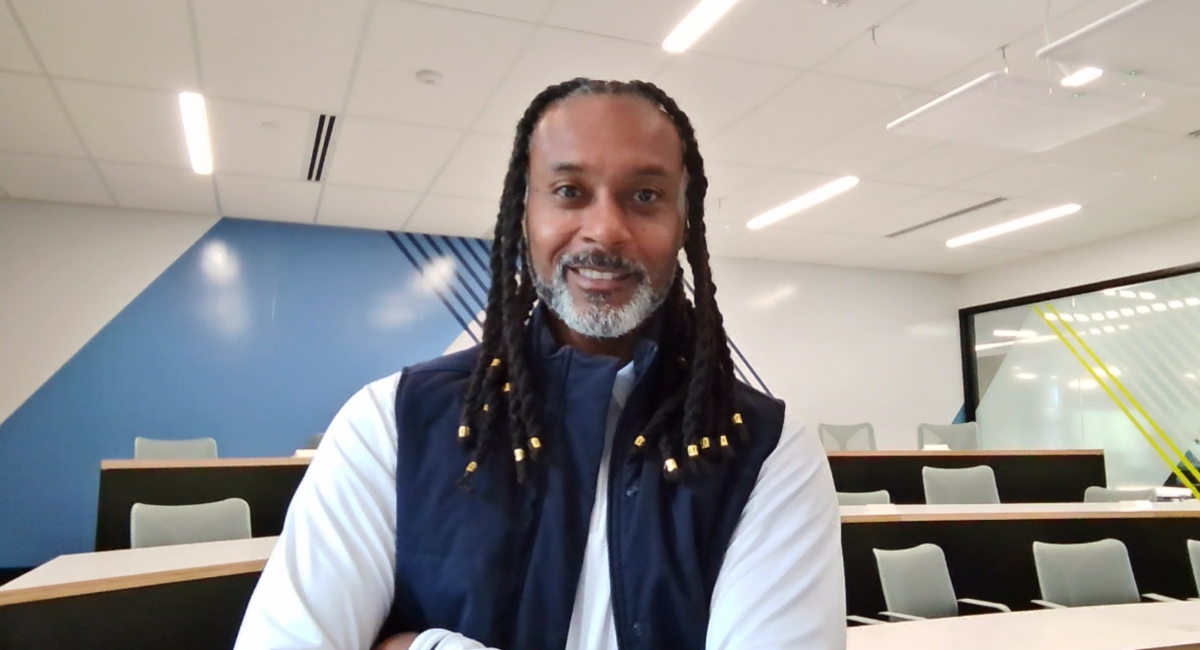
When Orrett Morgan first joined BCIT as Program Head of the Technology Support Professional (TSP) program in 2008, the classroom looked, and felt, very different. Although the program was teaching cutting-edge and job-ready skills just as it is today, the ways in which students now learn those skills have evolved – thanks to Orrett.
A classroom that reduces barriers to learning
After several years of teaching in the TSP program, Orrett knew he wanted to create a student learning experience that was impactful. So, after earning his Provincial Instructor Diploma (PIDP) and a Masters of Arts in Learning and Technology from Royal Roads University, he set out to do just that.
“It became clear that we could successfully teach the concepts whether the students were physically in the classroom or not,” says Orrett. “It’s a great example of how BCIT’s cutting-edge resources can really impact student learning.”
TSP is now offered in a blended delivery at the Downtown Vancouver BCIT Campus, or can be completed fully online over ten months.
Designing a “brave space”: Prioritizing student well-being
Orrett’s dedication to student well-being is unwavering, and he has spent the last decade transforming the learning environment for students in the TSP program. He realizes the importance of addressing topics like mental health and time management, as they can have a big impact on student learning.
“We have discussions about everything from eating and sleep habits to taking medications and going to therapy,” says Orrett. “We really celebrate neurodiversity, and I invite the students to share whatever they’re comfortable with.”
Orrett refers to his classroom culture as a ‘brave space,’ which means that although students are encouraged to share, there can also be respectful disagreements. “It’s critical that the students respect each other’s boundaries, and that’s ultimately what creates a safe learning environment,” says Orrett.
His unique pedagogy prioritizes student success and well-being, and is line with BCIT’s Student Well-being and Resilience Framework.
SEE MORE: Technology Support Professional alumna: 7 tips to start an IT career within 10 months
A student-centred learning environment
Orrett believes in teaching practical skills to students, such as critical thinking, trouble shooting, and problem solving, so they can apply them to any number of computing and information technology (IT) jobs once they graduate.
“I like to focus on these transferrable skills to allow students to navigate a variety of computing and IT jobs, as opposed to teaching them how to perform one specific job,” says Orrett.
He also removed the standard grading system and instead provides only a ‘satisfactory’ or ‘unsatisfactory’ result, to discourage competition and reduce stress.
“I’ve found this allows students to make a realistic effort while also perhaps coping with mental health, time management, or other challenges,” says Orrett. “I want to create an inclusive environment in which any student, regardless of ability, can participate. They’re only judged on what they’re able to do.”
Orrett says he’s noticed that student performance has increased overall, since he implemented the new grading system. “I can’t teach intrinsic motivation but I can create an environment where students are much more likely to be motivated to do something intrinsically,” says Orrett.
At the end of the day, Orrett says he just wants students to understand that they can be their authentic selves.
Pathways into an in-demand tech job in Canada
According to the Labour Market Outlook report, over 117,000 job openings are expected in STEM (science, technology, engineering, and math) with software engineers and designers as one of the top high-opportunity occupations.
With technology expected to be a key growth area for jobs opportunities in BC, it’s never too late to get into an in-demand tech job. Whether you’re a professional looking to pivot into the information technology (IT) industry, or a recent high school graduate with no relevant experience, BCIT is here to support you in developing the skills and knowledge to get into an in-demand tech job – starting with these six pathways.
Learn more about Computing and IT programs at BCIT.
(This story was published with support from BCIT Broadcast and Journalism student Isaac Newson.)

What an absolute delight to read this, Orrett! And I am applauding wildly over the rethinking/ reimagining of assessment. Fabulous.
Such a wonderful read! Orrett not only talks the talk but truly embodies unwavering support for students in their learning. Exceptional instructor!
BCIT is fortunate to have Orrett!
Wow! Congrats on your achievements Orrett! It takes courage to make transformational design decisions in teaching and learning. Especially when it comes to assignment decisions which are so ingrained in the educational system. I wish most faculty at BCIT would read about your success!
Rosario